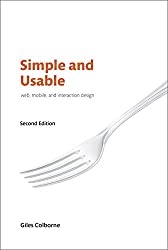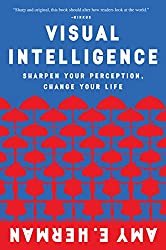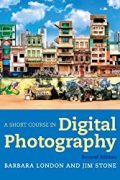
Rating: 8.0/10.
Simple and Usable: Web, Mobile, and Interaction Design by Giles Colborne
Book about designing products that are simple and easy to use. Often this is achieved by handling a lot of complexity behind the scenes so the mental burden on the user is minimal. Mainstream users generally just want to get a task done, and don’t care about learning all the features. Expert users want all kinds of customization options but they’re a small minority, so it’s wise not to listen to them too much. Imagine who will be using your product and the situation they’re using it (which will often be full of distractions) to understand what the user is really trying to do and design accordingly.
Four strategies of simplifying are: remove, organize, hide, and displace. Removing requires determining which features are important (eg: by interviewing the user) and cutting the rest. Many preference options can be removed if one choice is good enough, and the default settings are chosen intelligently. UI elements should be simplified to the essentials and language written to avoid being needlessly verbose.
The second strategy for simplification is organizing: grouping similar functions together. A group should contain no more than 7 things, and you can use grid layouts and colors to indicate grouping.
The third strategy is hiding: settings that are infrequently changed should be hidden from everyday use. Some settings are ones that experts will want to change but should have sensible defaults for non-experts. Need to have a clue that the setting exists, that’s unobtrusive for most users yet easily findable when you’re looking for it.
The fourth strategy is displacement: devices have different strengths and capabilities so it can be effective to displace a functionality to a different device, for example, make advanced features only available on desktop. Another effective design is make information less structured and allow the user to define the structure he wants, this avoids forcing the user to input information in a complex format that the software accepts.
Overall, quite a beautifully illustrated book with lots of practical examples and color figures on every opposing page. It’s an enjoyable read and gives the reader plenty to think about when designing a product.



